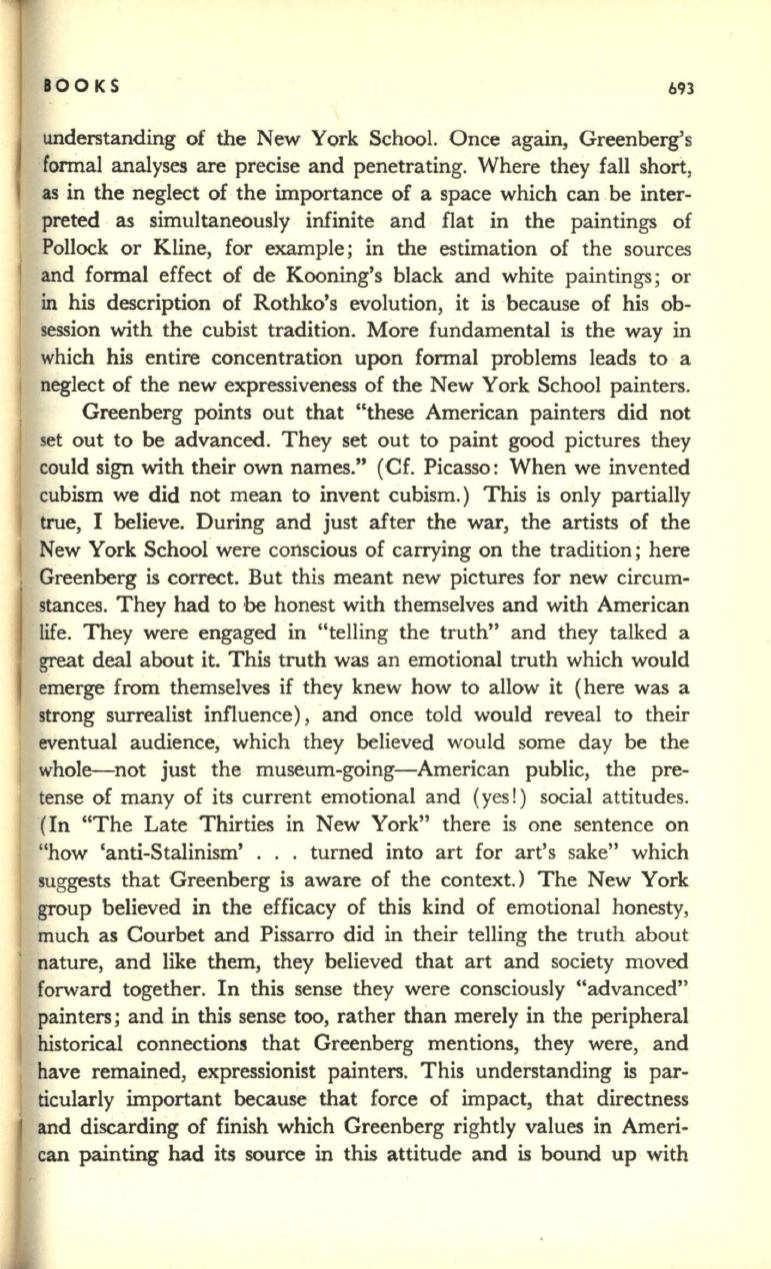
BOOKS
693
understanding of the New York School. Once again, Greenberg's
formal analyses are precise and penetrating. Where they fall short,
as
in the neglect of the importance of a space which can be inter–
preted as simultaneously infinite and flat in the paintings of
Pollock or Kline, for example; in the estimation of the sources
and formal effect of de Kooning's black and white paintings; or
in
his description of Rothko's evolution, it is because of his ob–
session with the cubist tradition. More fundamental is the way in
which his entire concentration upon formal problems leads to a
neglect of the new expressiveness of the New York School painters.
Greenberg points out that "these American painters did not
set out to be advanced. They set out to paint good pictures they
could sign with their own names." (Cf. Picasso: When we invented
cubism we did not mean to invent cubism.) This is only partially
true, I believe. During and just after the war, the artists of the
New York School were conscious of carrying on the tradition; here
Greenberg is correct. But this meant new pictures for new circum–
stances. They had to
be
honest with themselves and with American
life. They were engaged in "telling the truth" and they talked a
great deal about it. This truth was an emotional truth which would
emerge from themselves if they knew how to allow it (here was a
strong surrealist influence), and once told would reveal to their
eventual audience, which they believed would some day be the
whole-not just the museum-going-American public, the pre–
tense of many of its current emotional and (yes!) social attitudes.
(In "The Late Thirties in New York" there is one sentence on
"how 'anti-Stalinism' . . . turned into art for art's sake" which
suggests that Greenberg is aware of the context.) The New York
group believed in the efficacy of this kind of emotional honesty,
much as Courbet and Pissarro did in their telling the truth about
nature, and like them, they believed that art and society moved
forward together. In this sense they were consciously "advanced"
painters; and in this sense too, rather than merely in the peripheral
historical connections that Greenberg mentions, they were, and
have remained, expressionist painters. This understanding is par–
ticularly important because that force of impact, that directness
and discarding of finish which Greenberg rightly values in Ameri–
can painting had its source in this attitude and is bound up with


